Every year, many animals move from one place to another. This is called migration. Animals migrate to find food, stay warm, or have babies. Some travel across land, others swim in the ocean, and some fly across the sky. These journeys are long, hard, and sometimes dangerous. But animals still make them, often in large groups.
Here are 14 of the most amazing animal migrations in the world.
1. Wildebeest – Africa
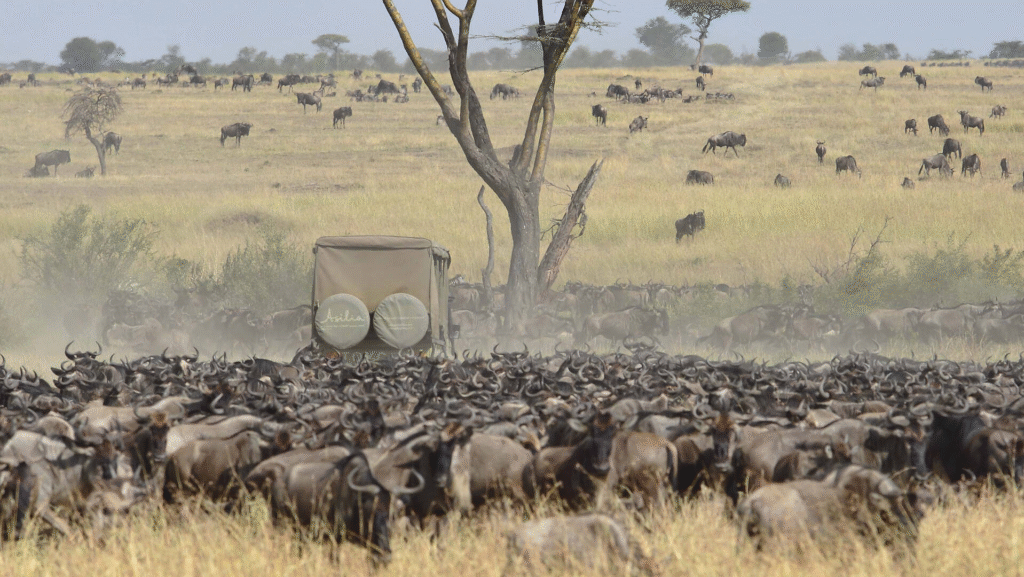
Wildebeest are large animals that look like a mix between a cow and a deer. Every year, more than 1.5 million wildebeest move across the plains of Tanzania and Kenya in Africa. They are joined by many zebras and antelopes.
They travel over 1,000 miles in a big circle, following the rain to find green grass. Along the way, they cross rivers with crocodiles and face hungry lions, cheetahs, and hyenas.
2. Monarch Butterflies – North America

Monarch butterflies are orange and black insects. Every fall, they fly from the United States and Canada to Mexico. Their trip can be as long as 3,000 miles.
No single butterfly makes the full journey back and forth. It takes four generations of butterflies to finish the whole trip. They find their way even if they’ve never made the journey before.
3. Arctic Terns – Around the World
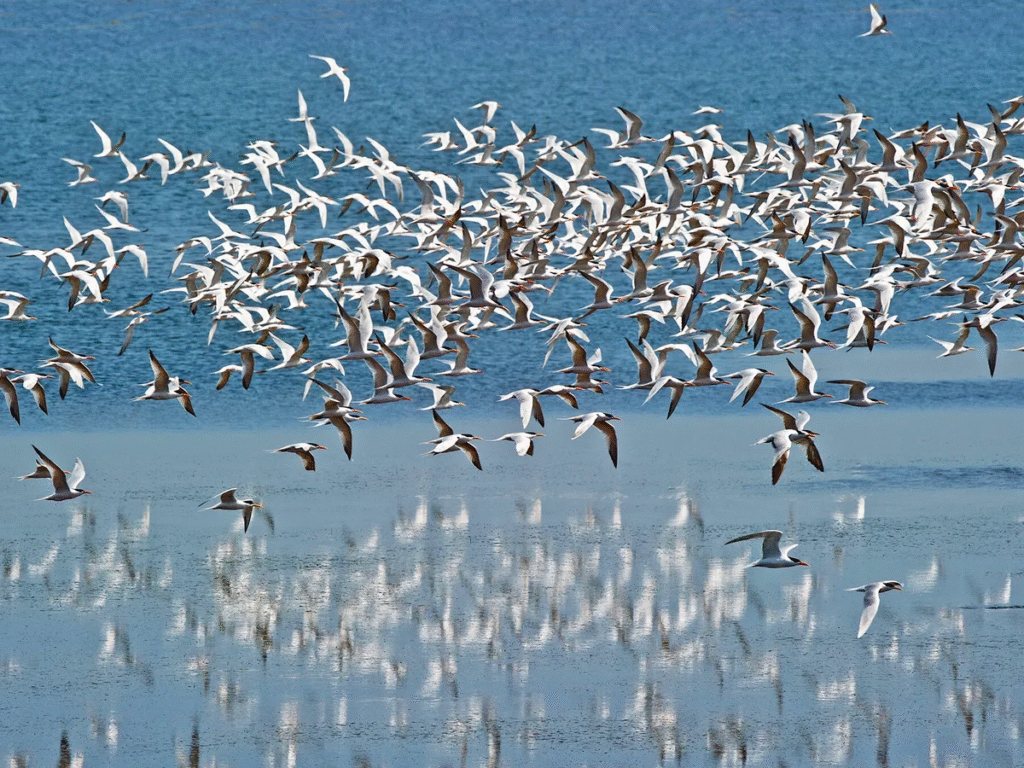
Arctic terns are small birds with long wings. They make the longest migration of any animal in the world. Each year, they fly from the Arctic, near the North Pole, to the Antarctic, near the South Pole. Then they fly back again.
This trip is more than 25,000 miles long. These birds follow the sun, spending their time in places where it’s always summer. They see more daylight than any other animal.
4. Humpback Whales – Oceans Worldwide
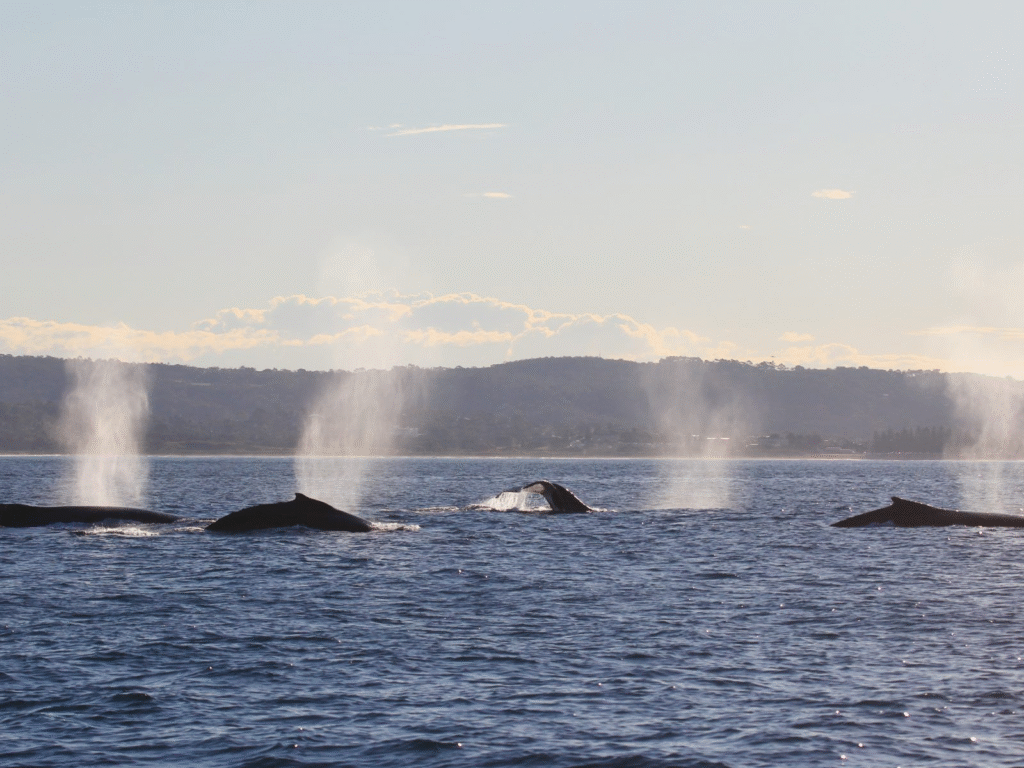
Humpback whales are large sea animals. In summer, they live in cold places like Alaska and Antarctica to eat. In winter, they swim to warm places like Hawaii, Mexico, or Australia to have babies.
They swim up to 5,000 miles each way. During their trip, they often sing songs that can be heard far away under the water.
5. Caribou – North America

Caribou, also called reindeer, live in the cold northern parts of Alaska and Canada. Each year, large groups of caribou move between the forests where they spend winter and the tundra where they live in summer.
Some groups travel more than 600 miles. Along the way, they face dangers like deep rivers and wolves. But their strong legs and thick fur help them keep going.
6. Salmon – North America and Europe

Salmon are fish that live in the ocean but return to rivers to lay their eggs. When it is time, they swim upstream, sometimes for hundreds of miles, to the place where they were born.
They jump over rocks and waterfalls. Many salmon do not make it, but those who do lay eggs before they die. Their short journey is very hard but very important for the next generation.
7. Leatherback Sea Turtles – Oceans Around the World

Leatherback sea turtles are the biggest turtles in the world. They swim across whole oceans to lay their eggs on sandy beaches. Some travel more than 10,000 miles to reach the right beach.
They come back to the same place where they were born. After laying their eggs, the baby turtles hatch and make their way into the ocean to start their own lives.
8. Fruit Bats – Africa
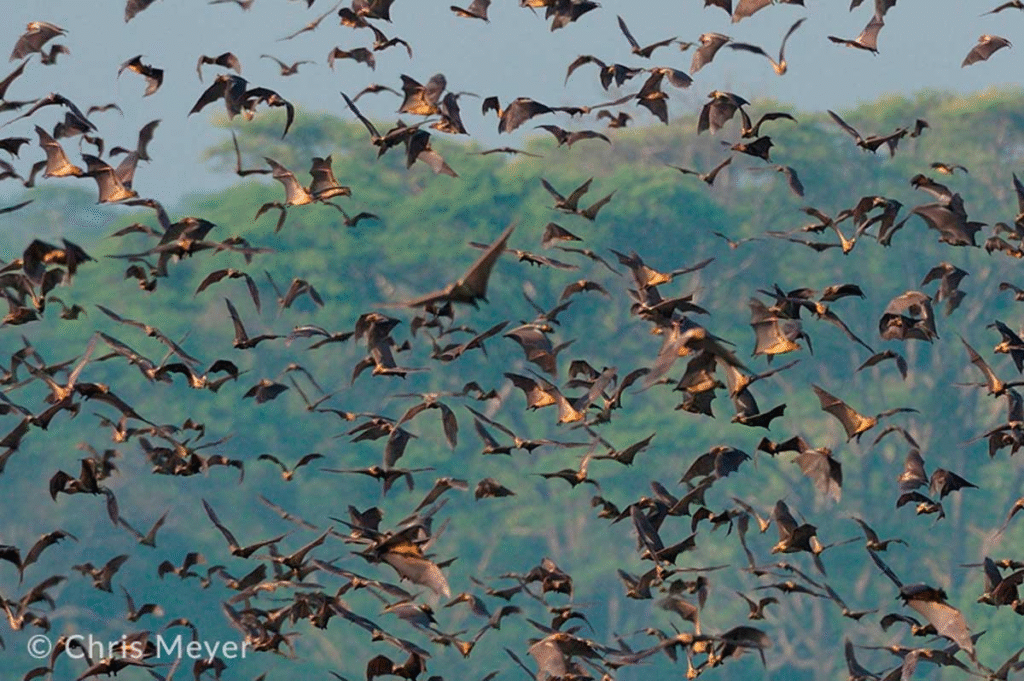
In Zambia, a country in Africa, more than 10 million fruit bats fly to Kasanka National Park each year. They come to eat ripe fruit from the trees.
The sky becomes dark with bats flying all around. This is the biggest migration of any mammal when counting the number of animals. These bats also help the forest by spreading seeds and pollen.
9. Red Crabs – Christmas Island

On Christmas Island in the Indian Ocean, millions of red crabs walk from the forest to the sea every year.
They do this to lay their eggs in the ocean. The crabs wait for the right rain and moon before they begin their journey. The roads and beaches become full of bright red crabs. It’s a sight many people come to see.
10. Zebras – Africa
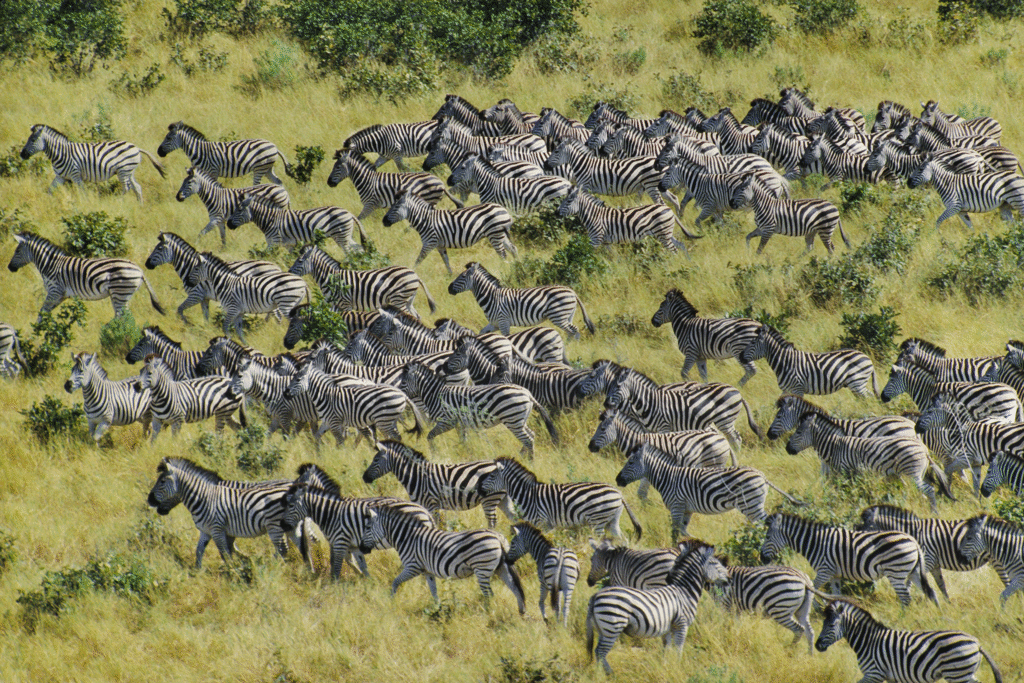
Zebras also travel across Africa to find food and water. One of the longest zebra migrations is in Botswana. Thousands of zebras move between the Okavango Delta and the Makgadikgadi salt pans.
This trip is about 300 miles long. Zebras often travel with wildebeest and use their striped bodies to confuse predators like lions and wild dogs.
11. Elephants – Africa and Asia

Elephants are the largest land animals in the world. In Africa, herds of elephants move from dry lands to places with more water during the dry season.
In Asia, elephants travel through forests and farmland. People are now building special paths, called elephant corridors, to help them move safely through human areas.
12. Dragonflies – Across Oceans

Some dragonflies, like the globe skimmer, travel very far. They fly from India to East Africa and back again. This round trip is more than 10,000 miles long, making it the longest insect migration ever recorded.
Even though dragonflies are small, they are strong fliers and can travel long distances without stopping.
13. Gray Whales – Pacific Ocean

Gray whales swim along the west coast of North America. They travel from cold waters in Alaska to warm waters in Mexico and back again. This trip is about 12,000 miles round trip.
They spend the summer feeding in the north, then swim south in winter to have their babies in safe, shallow lagoons. Many people enjoy watching these whales from the shore.
14. Saiga Antelope – Mongolia

The saiga antelope lives in the grasslands of Mongolia and Central Asia. They have large noses that help warm the cold air they breathe.
Each year, they move in search of food and better weather. Their migration covers hundreds of miles across flat, open land. Saigas are endangered, and people are working to protect their paths so they can survive.
Animal migrations are some of the most amazing events in nature. These animals travel long distances, sometimes across the world, just to stay alive, raise their young, or find food. Some follow the same path every year, using the stars, the sun, or smells to guide them.
By learning about these migrations, we understand how smart and strong animals are. And by protecting the lands, oceans, and skies they travel through, we can help keep these great journeys going for many years to come.
